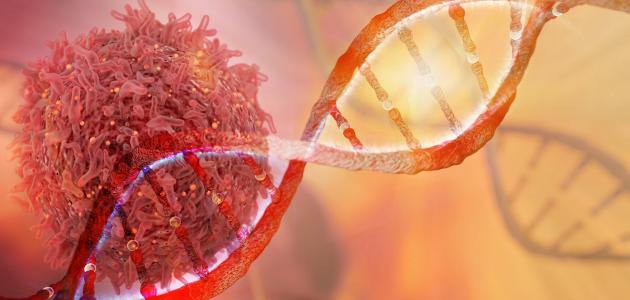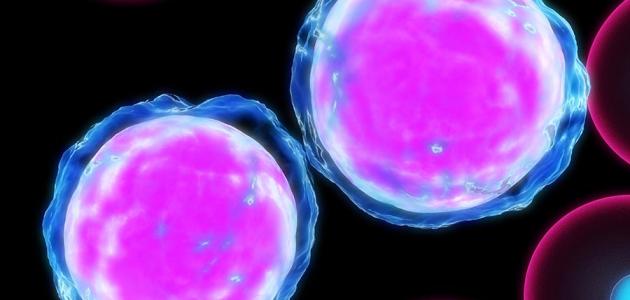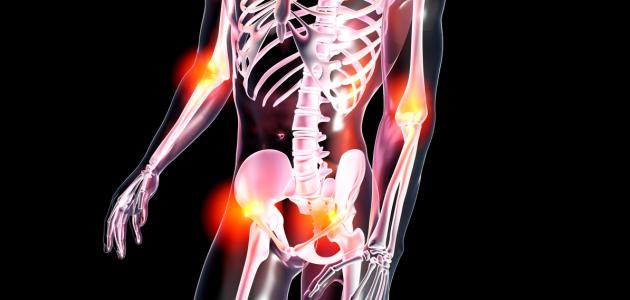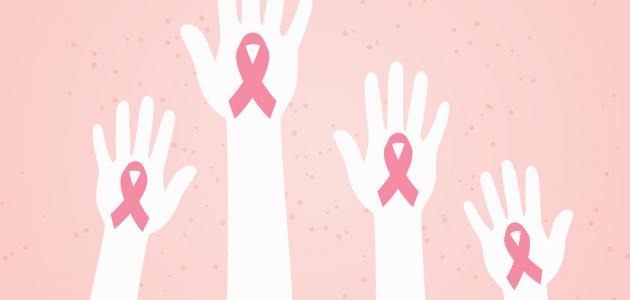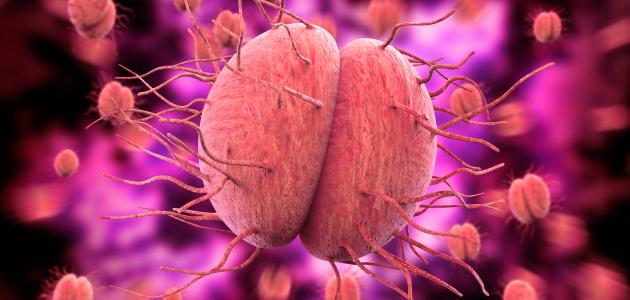Contents
Cancer
Cancer is a broad term that describes the condition that occurs as a result of cellular changes that cause abnormal cells to grow and divide in an uncontrolled way, and it is worth mentioning that there are some types of cancer that can cause rapid growth of cells, while That there are other types in which cells may divide and grow at a slower rate, and it should be noted that the development of cancer is often associated with a defect in the body's natural control mechanism, causing it to stop working, as old cells grow out of the body's control without dying, This may result in the accumulation of these extra cells in the form of a mass of solid tissue referred to medically as a tumor , but there are some types of cancer that develop without the emergence of tumors, including: Leukemia . [1] [2]
According to the World Health Organization and for short (WHO), cancer is the second major cause of death in the world, as statistics for 2018 indicate that cancer has caused the death of an estimated 9.6 million people in the world. That is, approximately one death out of 6 deaths, and it was also noted that there are many types of cancer were more common among men compared to other types of cancers; Notably: prostate cancer , lung cancer , liver cancer , stomach cancer , and cancer of the rectum and colon , in While breast cancer , cervical cancer , and thyroid cancer, colorectal cancer, and lung cancer are more common among women compared to other types of cancer. [3]
Is cancer contagious?
In fact, there is no scientific evidence so far to prove that cancer is an infectious disease, and it cannot be transmitted through direct contact between a healthy person and the affected person. Including touching, inhaling the same air, kissing, sharing food, or having sexual relations, so cancer is one of the non-communicable diseases, and even if some cancer cells did somehow move to a healthy person, the immune system is often able To recognize and eliminate foreign cells; Including cancer types. [4] [5]
Methods of transmission of cancer
There are many factors that are thought to cause the transmission of cancer from one person to another, or may be a cause of an increase in the risk of cancer, and they will be discussed in some detail as follows: [6]
Infection with certain types of infection
Viral infection
Some believe that cancer can be transmitted from person to person, and as we mentioned earlier, this is not true, but there are many infectious diseases that result from infection with a viral infection - some of which are considered very common - may be transmitted from one person to another through sexual contact or blood in Mostly, and it may result in an increased risk of cancer, and this is most likely the reason behind the misconception that cancer is one of the diseases that can be transmitted from person to person, and it should be noted that viral infection alone does not usually lead to cancer, but There are many factors besides viral infection that can contribute to the development of cancer more easily. Such as: smoking, a weak immune system, other infections, and other health problems. The following is an indication of the most prominent viruses that may play a role in increasing the risk of developing cancers: [6] [4]
- Hepatitis virus: such as: hepatitis B virus , abbreviation (HBV), and type C, and abbreviated (HCV), hepatitis C virus infection is a major cause of liver cancer worldwide, and it is the most common blood-borne virus in the United States of America, as this virus can be transmitted In the event of exposure to a needle contaminated with the blood of a person infected with the virus; It also happens when you share contaminated needles; Especially for intravenous drug users, and in fact, hepatitis C infection can be detected by performing a simple blood test, represented by taking a blood sample from the infected person. As for the treatment of viral hepatitis C, there are many effective and safe medicines. Which can be prescribed to the patient by the doctor, and it should be noted that failure to obtain treatment can lead to damage to the liver and the occurrence of some complications; Like cirrhosis and Primary liver cancer.
- Human papillomavirus: , for short (HPV), and is one of the most common types of sexually transmitted infections worldwide, and in general some types of this disease may constitute a risk factor that increases the likelihood of developing many types of cancer; Such as: cervical cancer , penile cancer, anal cancer, vaginal cancer , oral cancer, and throat cancer cancer), and it should be noted that there is still no treatment for HPV , but the virus usually disappears on its own, and fortunately a preventive vaccine is available that will contribute to reducing the possibility of infection.
- Epstein-Barr virus : , for short (EBV), and it is one of the types of viruses that belong to the family of herpes virusesIt is the main cause of mononucleosis, and it is worth noting that most people infected with the Epstein-Barr virus recover from it without facing any other health problems, although it may constitute a risk factor for many types of cancers, such as: Stomach cancer, nasopharyngeal carcinoma that most often affects the back of the nose, and some types of lymph node carcinomas; These include: Hodgkin's lymphoma and Burkitt's lymphoma. In general, infection with the Epstein-Barr virus can be transmitted from an infected person to others through the mouth, through coughing, or sharing food and drink, or Kissing or sneezing.
- Human T-lymphoma virus type 1: , and for short (HTLV-1), as this virus may be associated with the infection of certain types of lymphocytic leukemia and non-Hodgkin's lymphoma known for short (NHL).
- Human herpes virus type 8: , and for short (HHV-8), which most often causes Kaposi sarcoma in people with HIV.
- Human immunodeficiency virus : Human Immunodeficiency Virus (HIV), which causes AIDS , some types of cancers may be common in people with HIV; This is due to a weakened immune system, as previously indicated, examples of which are: invasive cervical cancer, and some types of lymphomas , and infection with the human papillomavirus or the human herpes virus type 8 may play. It plays a major role in the growth and development of HIV-related cancers.
Bacterial infection
Infection with some common bacteria can contribute. Such as: Helicobacter pylori bacteria (in Latin: Helicobacter pylori), or also known as stomach germ, increases the risk of some types of stomach cancers, especially if infection with this germ is long-term, as over time this germ can cause damage to the inner layer From the stomach, and this may increase the risk of stomach cancer . [4]
Parasitic infection
Parasites are also among the causes that can stimulate the development of cancer, as some parasitic worms can live inside the human body, causing an increased risk of some types of cancer, such as: cholangiocarcinoma and bladder cancer , and it should be noted that there is a scarcity of infection with a parasite that causes cancer in developed countries. As the United States of America. [4]
Cancer transmission during organ transplantation
In fact, the risk of cancer transmission through organ transplantation is very low, and according to statistics published by the National Cancer Institute, the rate of cancer through organ transplantation is about two out of 10,000 cases that received an organ from a donor with a history For cancerHowever, the risk of this still exists, and it can be said that a person who received an organ or tissue from a donor who had cancer in the past is more likely to develop cancer in the future, and it should be noted that the transplantation of organs or tissues are the only two cases that may be They cause cancer to spread from person to person, and doctors often avoid taking organs or tissues from donors who have a personal history of cancer. On the other hand, blood banks may also refuse to receive blood units from cancer patients, despite the absence of any scientific evidence that proves that the disease is Cancer may be transmitted through blood donation. [5] [6]
Cancer transmission from mother to fetus
In general, there are a few recorded cases in which the transmission of cancer from the mother to her fetus occurred during pregnancy, and this may occur through three main cases, each of which can be explained as follows: [7]
- The emergence of choriocarcinoma , which represents a rare form of malignancy, and often arises in the placenta, and this is the only case in which the cancer is transmitted sequentially. That is, when the organs are transferred from the infected mother to the recipient, this is accompanied by the transfer of cancer as follows: from the placenta to the mother, then from the mother to the organ recipient, as for the transmission of cancer from the mother to her fetus, in this case this cancer affects both the mother And the child.
- From mother to child: In fact, the spread of cancer to the placenta does not usually affect the child, as the placenta plays an important role as a barrier that prevents cancer cells from reaching the child, although there are many types of cancers that can be transmitted commonly to the child. Such as: lymphomas, melanoma , and leukemia.
- The transmission of leukemia from a child to his twin brother: It is considered a rare case, but sometimes there may be a transmission of cancer between twins.
Cancer prevention tips
It can be said that there is no sure method that can be followed to prevent cancer, but there are many ways that can help reduce the risk of cancer, according to what many experts have agreed upon. Among the most prominent of these methods are the following: [8] [9 ]
- Maintaining a healthy weight: by following a healthy diet and exercising regularly, and maintaining weight is important, as being overweight or obese can increase the risk of cancer.
- Adopting a healthy diet: In general, a healthy diet helps to maintain the health of the body, and this is often achieved by eating more vegetables, fruits, and foods that contain lean protein , in addition to eating whole grains .
- Exercising regularly: It is recommended to exercise for at least 30 minutes on most days of the week, and if the person is not used to exercising regularly, it is possible to start practicing it gradually and slowly, up to 30 minutes or more.
- Getting vaccinations: As mentioned previously, cancer may be associated with some types of viruses, which can be prevented by receiving vaccines designated for this, depending on what the doctor deems appropriate for the patient's condition.
- Quit smoking: Smoking is considered to increase the risk of cancer. Not only is lung cancer , but it may be associated with other types of cancer, so it is advised to avoid smoking and quit in order to reduce the risk of developing cancers in the future.
- Avoid excessive exposure to the sun: this can be achieved by using a suitable sunscreen, staying in the shade, and wearing protective clothing, and in general it is recommended to avoid the sun's rays as it is the main source of harmful ultraviolet rays, as these rays can Increased risk of skin cancer .
References
- ↑ Rachel Nall, MSN, CRNA (6-1-2020), "What to know about cancer" , www.medicalnewstoday.com , Retrieved 3-7-2020. Edited.
- ↑ "What is cancer?" , www.cancercenter.com , Retrieved 3-7-2020. Edited.
- ↑ "Cancer" , www.who.int , Retrieved 3-7-2020. Edited.
- ^ A b t w "Is Cancer Contagious?" , www.cancer.org , Retrieved 3-7-2020. Edited.
- ^ A b " the Common Cancer Myths And Misconceptions" , Www.cancer.gov , Retrieved 3-7-2020. Edited.
- ^ A b v "Is Cancer Contagious?" , www.roswellpark.org , Retrieved 3-7-2020. Edited.
- ↑ Lisa Fayed (27-1-2020), "Understanding If Cancer Is Contagious" , www.verywellhealth.com , Retrieved 3-7-2020. Edited.
- ↑ "Cancer" , www.mayoclinic.org , Retrieved 3-7-2020. Edited.
- ↑ "Cancer" , www.nchmd.org , Retrieved 3-7-2020. Edited.
